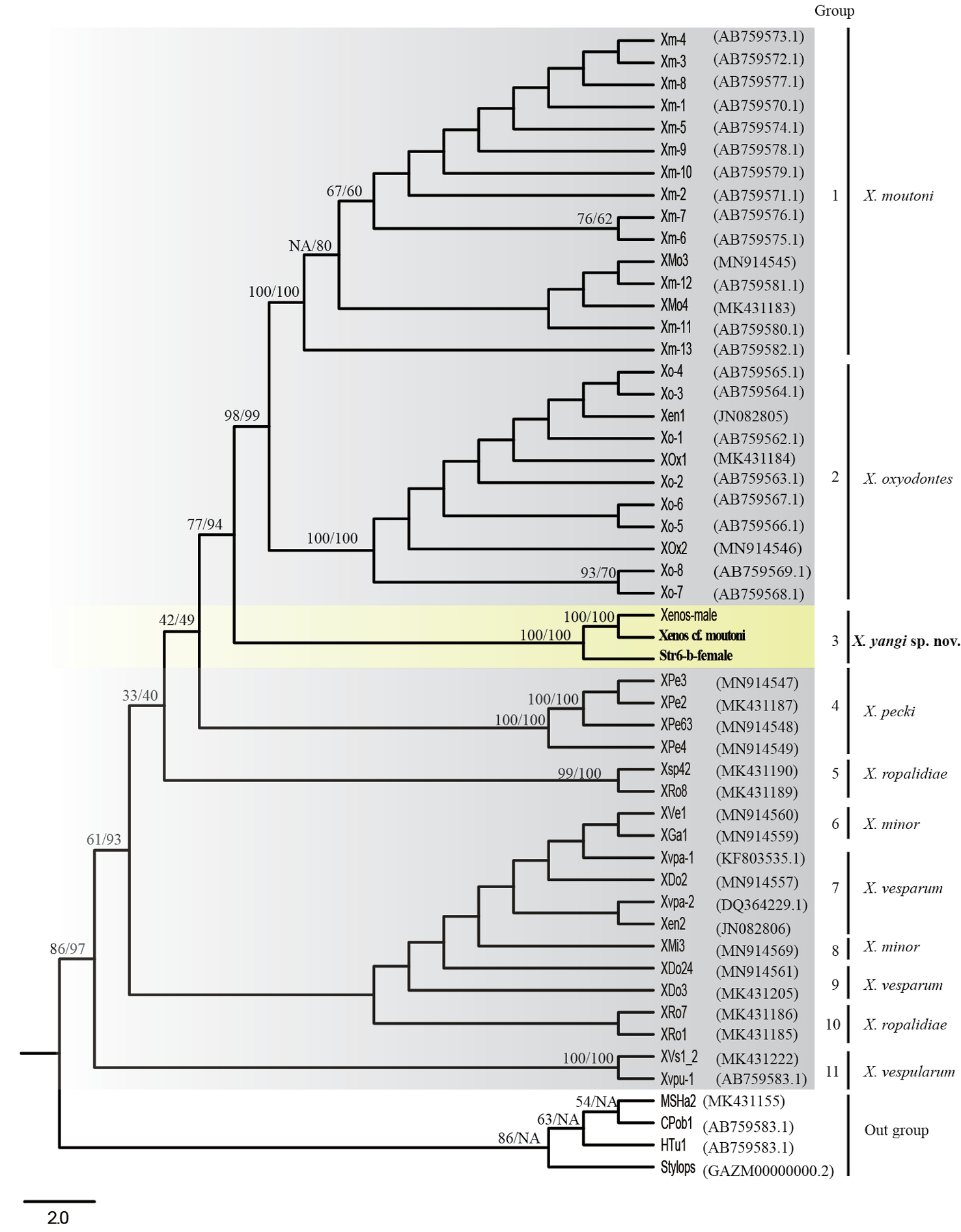
|
||
|
Phylogeny tree of Xenos species inferred from mitochondrial cytochrome c oxidase subunit 1 (COI) using Maximum parsimony method. In total, 48 COI sequences of different Xenos species were used to investigate their phylogenetic relationships. two sequences (str6-b-female and Xenos-male) were sequenced in this study, and that of Xenos cf. moutoni (MW222190.2) was sequenced in Zhang et al. (2021). Other 45 sequences were published by the following studies (Benda et al. 2021; McMahon et al. 2011; Nakase and Kato 2013; Jůzová et al. 2015; Carapelli et al. 2006). Stylops ater Reichert, 1914, Melittostylops hesperapium Kinzelbach, 1971, Halictoxenos tumulorum Perkins, 1918 and Crawfordia warnckei Kinzelbach, 1970 (outgroup) were used as outgroups. The phylogenetic trees were constructed using Maximum Parsimony (MP), and Maximum Likelihood (ML). Branch support values are described as Maximum Parsimony (MP)/Maximum Likelihood (ML) in MP tree. |